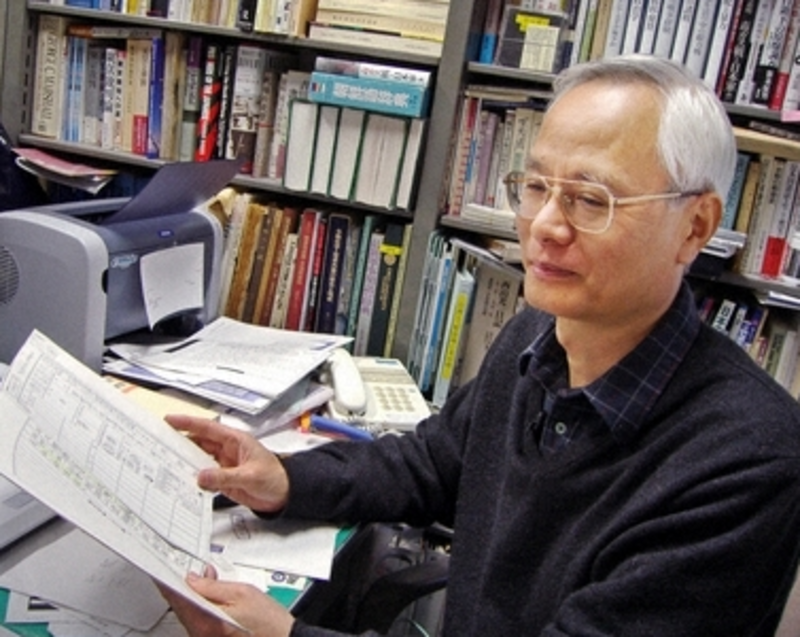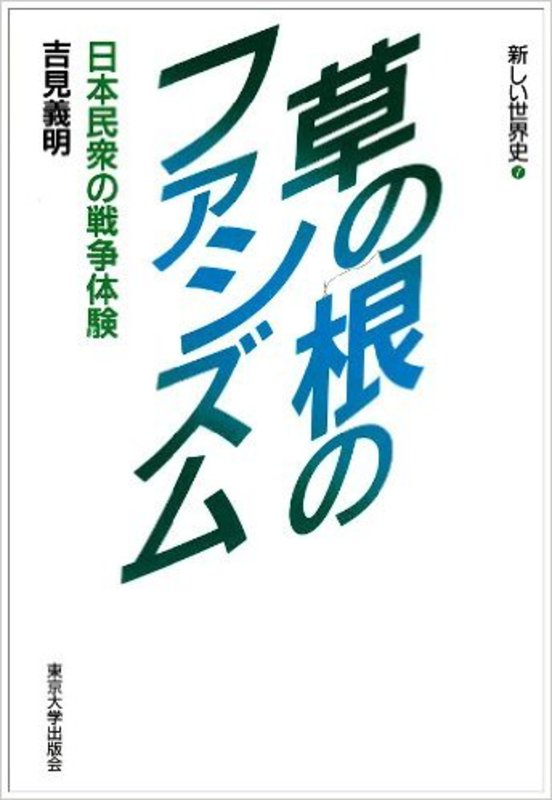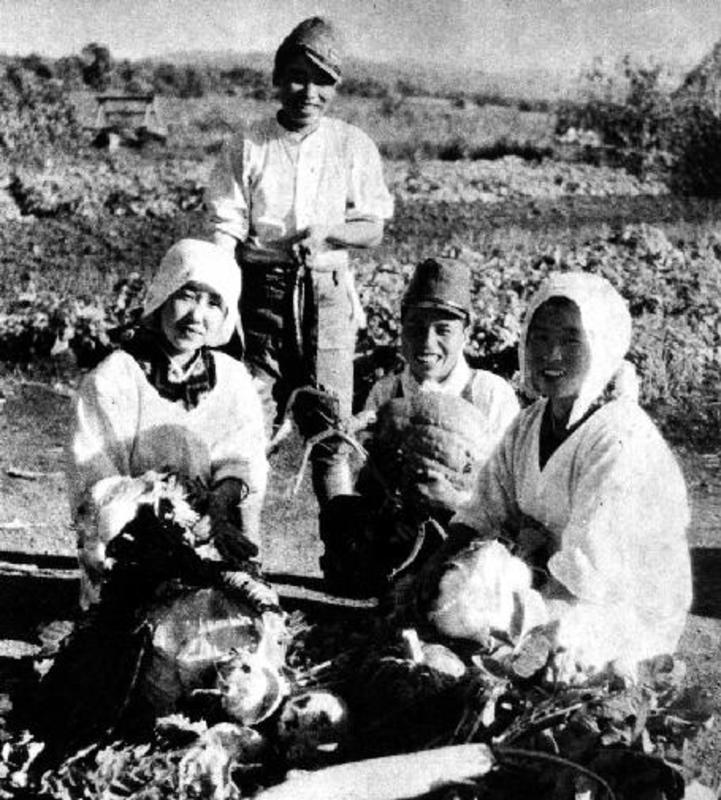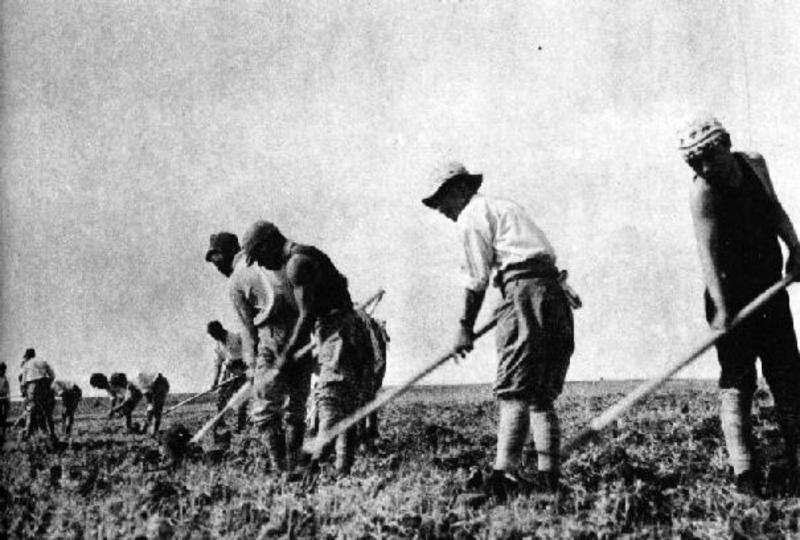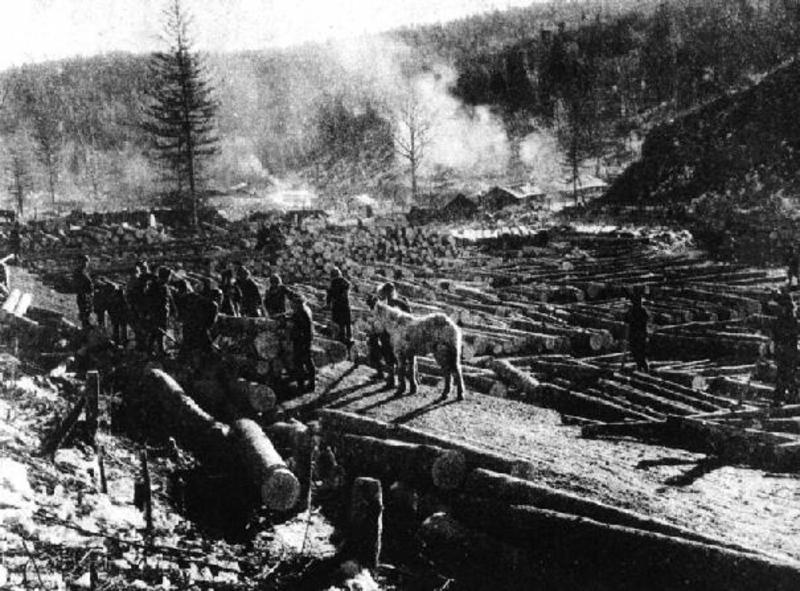Grassroots Fascism: The War Experience of the Japanese People
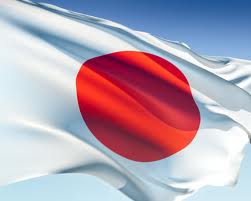
Translated and introduced by Ethan Mark
Introduction: The People and the War
As a young historian researching prewar popular political movements in the early 1970s, Yoshimi Yoshiaki (b. 1946) became increasingly struck—and troubled—by the systematic inattention to popular experiences of the war period, along with the virtually universal silence on questions of popular war responsibility. Imbued with the progressive convictions of a scholarly generation that came of age amid the political struggles of the late 1960s, he was dissatisfied with the near-universal academic focus on elites and abstract social structures that rendered the story of the Japanese experience of the war “a history without people.” After many years of research, stops and starts, the end result was Grassroots Fascism: a radically different vantage on the wartime experience from the “bottom-up” and a bold attempt to break out of the constricted confines of “history in the passive voice.”
Taking us on a narrative journey that begins with the war’s troubled early 1930s beginnings and culminates in the disaster of defeat and the promise of a new beginning in 1945, moving adeptly and systematically between the home front and the diverse variety of “fronts” that distinguished Japan’s far-flung Asian imperium, Grassroots Fascism exposes us to a remarkable array of popular voices deftly assembled from sources such as diaries, government archives, and memoirs. Along the way Yoshimi presents a carefully nuanced and historicized portrait of everyday, non-elite Japanese in all their real-life complexity and ambiguity not only as victims of, but also as active participants in, the wartime struggle for hegemony in Asia and social renovation at home. Grassroots Fascism is also at special pains to include penetrating accounts of the experience of Japanese ethnic minorities and imperial subjects, including Okinawans, Koreans, and Taiwanese, engaged in their own complex personal and group negotiations of the wartime enterprise.
|
Yoshimi Yoshiaki |
In taking Japan’s “common people” as protagonists and letting them in effect tell their own story of the war as it evolved, Grassroots Fascism reveals a 1930s and 1940s Japan that defies historiographical convention. Viewed from the bottom up, there unfolds before us a complex modern mass society, with a corresponding variety of popular roles and agendas. The comfortable, transparent “black and white” of conventional narratives of victims and villains is boldly exchanged for the translucent “grey” of a Japanese people cast as both victim and victimizer. In this and in its ingenious deployment of source material to evoke the wartime experience in three dimensions of vividness and diversity, Yoshimi’s study elevates scholarly discussion of the nature and dynamics of Japan’s wartime experience—and of “Japanese fascism”—to a bold new level.
Fascism and Empire at the Grassroots
Yoshimi’s narrative of the unfolding of Japanese fascism is distinguished by his identification of the crucial role played by the interaction between the metropolitan center and the imperial periphery and the link between the increasingly brutal Japanese suppression of anticolonial resistance and fascist radicalization. This innovative perspective in turn emphasizes the historicity of the Japanese wartime regime as one evolving—and intensifying—in response to the perceived demands of total war.
At the start of the Sino-Japanese war in the late 1930s,“Domestically there was not much of a crisis situation, but quite important in place of this was the great number of the people who were mobilized into the military and sent to the Chinese mainland, there having a crisis type of experience that played an extraordinarily great role in Japan’s fascistization—this is my thinking.”1 Yoshimi’s centering of this China war dynamic in the making of Japanese fascism leads him to locate the critical moment of fascist consolidation at a time in which the savagery of the war and the tenacity of Chinese resistance prompted an increasingly radical Japanese response. He dates this moment to 1940–1941—precisely the period in which conventional, domestically-focused scholars have identified a “failure” of attempts to consolidate a genuinely fascist regime in the political center “back home.”2 In turn, Japan’s unexpectedly easy and dramatic string of victories against the Western Powers in Asia and the Pacific during the first months of the Pacific War that followed soon afterward imparted a deeper solidity and legitimacy to Japan’s war, to the system supporting it, and to the sacrifices it demanded, its “success” virtually silencing all remaining domestic dissent. “Here, a true situation of wild enthusiasm had finally emerged,” writes Yoshimi, “and emperor-system fascism had crystallized.”3 In this sense this experience can be fruitfully compared with similar developments in Europe in the wake of Mussolini’s 1935 victory in Ethiopia and Hitler’s unexpectedly easy defeat of archrival France in 1940, but for two reasons its impact was all the more broad and profound: militarily, it could not have posed a more positive contrast to the inconclusive and ongoing quagmire of Japan’s war in China. Equally or more important was its matching of Japanese propaganda of “Asian liberation” with concrete and effective action. As Yoshimi observes in Grassroots Fascism, such a mission held an appeal not only for Japanese but indeed for peoples around the globe convinced of the illegitimacy of Western imperial domination, including Taiwanese, Koreans, and Southeast Asians.
What ultimately sets Yoshimi’s approach apart is his combination of an empirewide perspective with a focus on the rise of fascism from the “bottom up”: the ambivalent role of ordinary Japanese not only as victims but also as agents and conduits of fascism. In a dialectical movement between metropole and periphery, between battlefield and paddy field, and between visions of imperial prosperity and the grim reality of wartime deprivation, ordinary Japanese came to share with military and bureaucratic elites a desire for a transcendent resolution of the national crisis, producing indispensible mass support for a radical transformation of the relations of state and society along fascist lines. In the Japanese countryside, Yoshimi says, at first it was “landlords and powerful landed farmers who were the core figures at the center of the system,”reflecting a situation of social and political continuity since the Meiji period. But as the war escalated into total war, he argues, “many people were needed as supporters, and the central supporters [of fascism] become those of a slightly lower level—landed farmers and landed/tenant farmers.”4 For many, participation in the war effort was not simply the product of patriotism or pressure from above, but it also beckoned as a revolutionary opportunity for social and political participation and advancement in a time of crisis. From peasant recruits to small farmers to elementary school teachers to colonial settlers, we are thus confronted with grassroots fascism as an ambiguous, ambivalent product of oppression and ambition, hope and desperation, brutalization and brutality. EM
Grassroots Imperialism
When the Sino-Japanese War began on July 7th 1937, popular calls for “imperialism externally,” a desire previously well buried, suddenly came to the fore. Along with limits on freedom of expression and the manipulation of public opinion, a number of other factors began to have a determining influence on popular consciousness. There was a manner of thinking along the lines of a fait accompli: “Now that the war has started, we’d better win it.” There was a strong sense that Japan was winning the war. And by the end of 1937, Japan had dispatched some 770,000 troops, a reality that weighed heavily.
According to a national survey of thirty-eight municipalities conducted at the end of 1937 by the Cabinet Planning Board’s Industry Section, the attitude of people in farming, mountain, and fishing villages towards the war against China, summarized in terms of a single village, was divided between “the middle class and up,” who “want the war to be pursued … to the fullest (to the point that [hostilities] will not flare up again),” and “the middle class and below,” who “want it to be brought to as speedy an end as possible.”5
If we examine the calls for a speedy end to the war more closely—voices mostly from “the middle and below”—the following sorts of examples emerge with particular force.
a. “We hope that it ends quickly. (We hope that overseas development will be possible. There is only one person who does not want to leave the village and emigrate to Manchuria).”
b. “In order to extend Japan’s influence in northern China, we are planning to send out two or three of my boys.”
c. “To compensate for all the sacrifices the Imperial Army has made, [(North and Central China]) should be brought under the control of the Empire.”
d. “We hope that we’ll be able to secure considerable rights and interests.”
Each of these statements represented a hope for a swift end to the war that went hand in hand with a yearning for concrete profits or rights and interests, clearly demonstrating that a “grassroots imperialism” ideology had begun to surge among the people. The people of the town of Kawashima in Kagawa Prefecture were a representative example. Reflecting the complexity of popular attitudes, it was reported here that “if the war goes on for long it will be a problem—this is what people genuinely say. Yet on the other hand, people of all classes also say that we have to keep fighting until we win.” One said that “it would be a waste to meaninglessly give back territory people have given their lives for,” another that “the people will not accept it if we gain nothing—either land or reparations. We don’t want to give back what we’ve already spent so much money getting for no reason. Northern China alone will not do. This is the second time we’ve shed blood in Shanghai.”
Here, then, is the picture of a people who, in the midst of their difficult lives, earnestly desired to cooperate in the war because it was their “duty as Japanese,” wishing simultaneously for a swift end to the conflict and to gain privileges from it.
The Profits of War
For the soldiers and their families, conscription and deployment to the front did not bring only suffering. An examination of letters from peasant soldiers who died in battle conducted by the Iwate Prefecture Farming Villages Culture Discussion Association (Iwate ken nōson bunka kondankai) makes clear that from the moment they joined the army, peasant soldiers were liberated from time-consuming and arduous farming chores. With “a daily bath,” “fairly good” food, and “fine shoes,” they led more privileged lives than they had in their farming villages. They received salaries that they could save or send to their families. They were able to enjoy “equal” treatment without regard to their social status or their wealth or poverty. They received education and were able to improve their social standing through their own talents.6
The army was also seen to afford peasant soldiers new prospects. If one became a noncommissioned officer—a corporal or sergeant—through service in the field, the road lay open to becoming a person of influence in one’s village upon return. Soldiers were so eager to make the rank of corporal that teasing of those who remained privates sometimes led to incidents of assault.7
Soldiers perceived the colonies and the occupied territories as good places to “get ahead” after they’d been discharged. Abe Katsuo, a peasant cultivator from Iwayadō in Iwate Prefecture who fought in China’s Shanxi Province, reported thinking to himself, “After this, for the sake of the development of northern China… they say you can find employment in a government office or a company, and if it’s true you can earn as much as 150 yen per month, then maybe I’ll try settling in China for a bit.”8 Sasaki Tokusaburō, the eldest son of an owner-cultivator from Tokiwa Village in Akita Prefecture, studied while in the army and hoped to take exams to become a forest superintendent in South Sakhalin or to become a policeman there or in Korea or Hokkaidō.9
Tsuchiya Yoshio, the son of a track maintenance worker and tenant farmer in Saigō Village in Yamagata Prefecture, volunteered after the Manchurian Incident and was sent to Manchuria as a military policeman (kenpei). After his discharge he intended to “make a name” for himself (hitohata ageru) by finding employment with the South Manchurian Railway Company; when he later heard the announcement of the attack on Pearl Harbor, he pondered the possibility of becoming “even the master of some island in the South Pacific.”10
Fighting in southern China in July 1939, Sergeant Murata Washirō discussed with his underlings his plan of going into business in northern China upon his discharge and, if possible, managing a newspaper or hospital or organizing a resident’s association.11
These were the attempts of some men to find a way to live in the war’s midst after it had shattered their life prospects. It must be said that soldiers were cornered into this situation. At the same time, we cannot overlook this aspect: that the desire to get as much profit as possible out of the war transcended their unhappiness at being conscripted, and that soldiers supported the war in earnest.
Battles in Northern China and Soldiers from Tōhoku
Many soldiers hailing from the Tōhoku region in the north of the main island of Honshū, one of Japan’s most impoverished regions, were sent to northern China. How did the war alter the consciousness of soldiers from Tōhoku, and what was their thinking after repatriation? As an example, let us examine the case of a schoolteacher. Kimura Genzaemon, an instructor at Tōmai Ordinary/ Higher Elementary School in Akita Prefecture, received his draft notice on August 25, 1937 and participated in numerous battles throughout northern China as a stretcher bearer in the medical corps of the 108th Division.12
Before he departed for the front, Kimura recited a “speech on the world-historical and Japanese-historical significance of the [China] Incident.” From this salutation, we may gather that he supported the war. Yet as he crossed over the Shanhaiguan Pass and entered Northern China on September 24, 1937, he offered the following calm, candidly pessimistic observation: “Those who would sincerely welcome the chance to go to the front are, in general, only the uneducated. Children, women, (uneducated) old folks. The intelligentsia are, in general, bystanders. Is the Japanese Spirit unable to hold its own against Culture?”13
As Kimura witnessed Chinese people made into refugees after defeat in battle, participated in their enslavement, carried out requisitions, watched prisoners murdered, and heard about the “shooting to death of all the village inhabitants” in a punitive expedition (October 14, 1937),14 however, he came to believe sincerely in the “superiority” of the Japanese race:
When I think about the future of the Japanese race compared to the Chinese race I discover that I am all the more confident of our superiority. Of course among the ranks of Japanese youth an apathetic, utilitarian quality has recently been drawing attention, but at least so long as they retain their emotionalism, their obsession with cleanliness, and their yen for improvement, I believe it will be easy for them to overcome the animal-like prowess, the physical robustness, and the existential deep-rootedness of the Chinese masses.15
On February 18, Kimura’s Kasuya unit entered Licheng county (黎城県) in Shanxi Province. They repeatedly fought with the Eighth Route Army in Shanxi, and Kimura’s unit was gradually annihilated. Waged by a Chinese people whose solidarity extended to the elderly, women, and children, the relentless war against the Japanese far surpassed his expectations. Confronting this situation—one difficult to comprehend according to what had been Japanese popular “common sense”—Kimura found no means of overcoming his spiritual crisis other than by abnormally ratcheting up his will to battle and his hatred of the enemy.
Kimura subsequently participated in several punitive expeditions in Shanxi, during which he had such experiences as “lopping off enemy heads without a second thought when the opportunity arises” (May 10, 1939) and “beheading one” prisoner while “submitting two more for vivisection” (August 11, 1939). He received a letter of commendation for his efforts in the campaign. Within this context, his view of China became even more warped.16
Looking back over the results of more than two years of battlefield experience on the eve of his return to Japan on October 30th, 1939, Kimura realized he’d reached a point where a “ spectacular idealism” had been conquered by an “extremely simple realism.” His realism amounted to this: In order to construct an “East Asian Cooperative Body” (Tōa kyōdōtai) and a “New East Asian Order,” the “Japanese race” itself required a “renovation and reformation of its domestic style,” but the gap between reality and what was needed was exceedingly wide, and overcoming this would be far more difficult than battling “millions upon millions of enemies.” Behind this thinking was a recognition of the fact that an anti-Japanese war of a truly popular nature was being waged, a recognition combined with a deep-seated fear. Thus Kimura ultimately hardened in his determination to see a New East Asian Order established: “No matter what the difficulties, so long as we cannot afford to evade it, we must continue to make solid progress toward it, step by step.”17
On November 25, 1939, Kimura was reunited with his family at Akita Station, and from then on he would pursue his teaching in Akita Prefecture from the standpoint he had articulated on the eve of his repatriation. YY
The above is an abridged, modified excerpt from the Translator’s Introduction and Chapter One of Yoshimi Yoshiaki’s Grassroots Fascism: The War Experience of the Japanese People, translated by Ethan Mark and published by Columbia University Press (New York: 2015). First published in Japanese by Tokyo University Press as Kusa no ne no fashizumu: Nihon minshū no sensō taiken in 1987 and still unsurpassed in its ambitious geographical, social, and chronological scope, Grassroots Fascism comprises at once both an intimate exploration of popular experiences of Japan’s war and an earnest attempt to interpret and reckon with the meaning and lessons of these experiences for the present—both in scholarly and moral terms. In both aims, the work is distinguished by its reliance upon, and faithful representation of, the voices of ordinary people. The war’s end is now seventy years behind us, and the authors of these popular testimonies are for the most part no longer with us. But in a time of unprecedented polarization regarding Japan’s wartime history and its legacies, their voices—and Professor Yoshimi’s classic study— are surely more relevant than ever. EM
Ethan Mark is a lecturer in Modern Japanese History at Leiden University. His article on “The Perils of Co-Prosperity: Takeda Rintarō, Occupied Southeast Asia, and the Seductions of Postcolonial Empire,” was published in 2014 in The American Historical Review 119(4): 1184-1206.
Excerpted from Grassroots Fascism by Yoshimi Yoshiaki. Copyright (c) 1987 Yoshimi Yoshiaki translation copyright (c) 2015 Columbia University Press. Used by arrangement with the Publisher. All rights reserved.
Notes
1 Personal interview with Yoshimi Yoshiaki, Tokyo, January 19, 2007.
2 Scholars have typically illustrated this “failure” with reference to the experience of the Imperial Rule Assistance Association (IRAA) established around this time, intended by its elite instigators as a vehicle for fascist-style one-party rule under Prime Minister Konoe Fumimaro, but frustrated by the bureaucratic establishment. As E.H. Norman observed at the time, “experienced bureaucracy has gradually snuffed out all signs of democratic activity, but on the other hand it has blocked the victory of outside fascist forces.” E.H. Norman, cited in John W. Dower, “E.H. Norman, Japan, and the Uses of History,” in Origins of the Modern Japanese State: Selected Writings of E.H. Norman, ed. John W. Dower (New York: Pantheon, 1975), pp. 73.
3 Yoshimi, Grassroots Fascism, p. 96.
4 Personal interview with Yoshimi, Tokyo, January 19, 2007.
5 This and the following comments from Japanese villagers are from Naikaku jōhōbu, ed., “Jihenka ni okeru nōsangyoson no shisō dōkō” (Tendencies of Thinking during the [China] Incident in Farming, Mountain, and Fishing Villages), repr. In Shiryō Nihon gendaishi, ed. Yoshimi Yoshiaki, Ikō Toshiya, and Yoshida Yutaka (Tokyo: Ōtsuki shoten, 1984), 11, pp. 310, 319-322.
6 Iwate ken nōson bunka kondankai, Senbotsu nōmin heishi no tegami (Tokyo: Iwanami shoten, 1961), 226–229
7 Yamamoto Takeshi, Ichiheishi no jūgun kiroku (Fukui: Yasuda shoten, 1985), 192.
8 Senbotsu nōmin heishi no tegami, 74.
9 Ibid.
10 Asahi shimbun Yamagata shikyoku, Kikigaki: aru kenpei no kiroku (Tokyo: Asahi shimbunsha, 1985), 26, 152.
11 Murata Washirō, Nitchū sensō nikki (Tokyo, Hōwa shuppan, 1983), 5:112.
12 This account draws on Kimura Genzaemon’s detailed diary from the front, Nitchū sensō shussei nikki (Akita: Mumyōsha shuppan, 1982).
13 Ibid, 19.
14 Ibid, p. 30.
15 Ibid, p. 53. Entry of January 5, 1938.
16 Ibid, pp. 207, 233.
17 Ibid, p. 266.
Yoshimi Yoshiaki translation copyright (c) 2015 Columbia University Press. Used by arrangement with the Publisher. All rights reserved.


